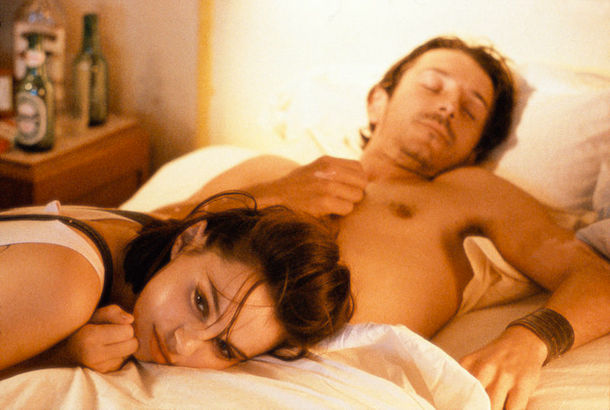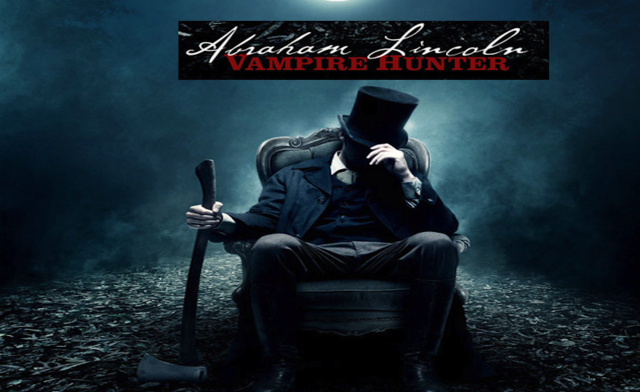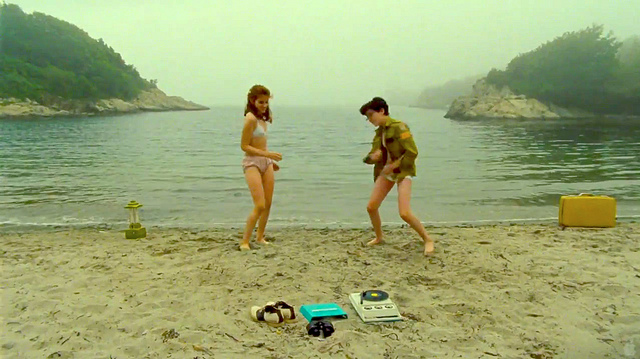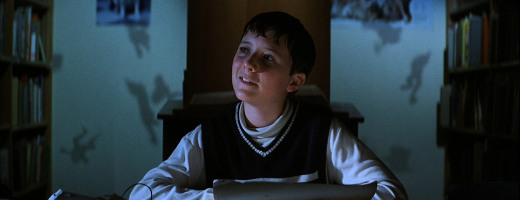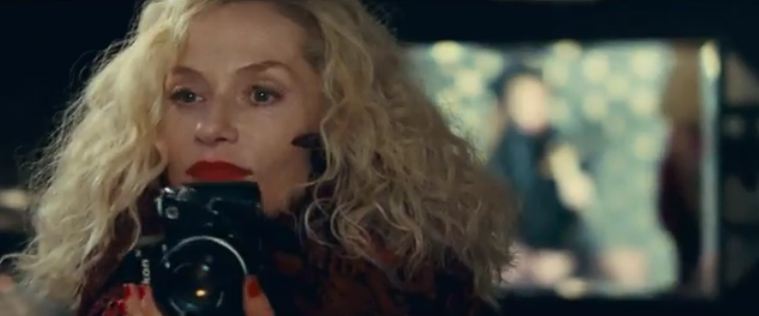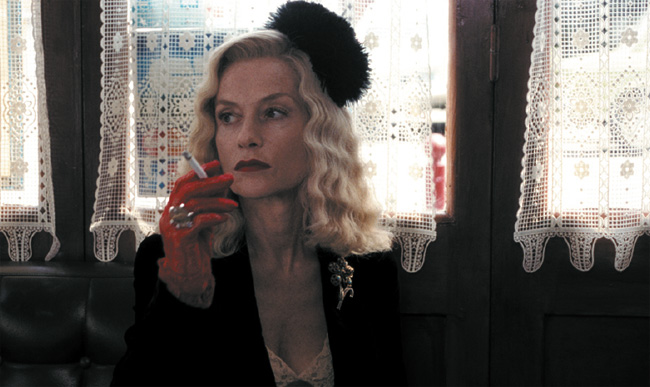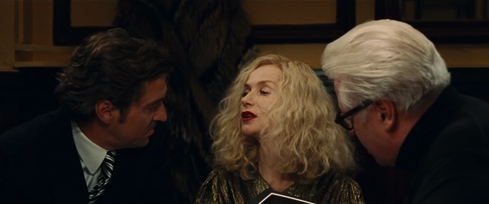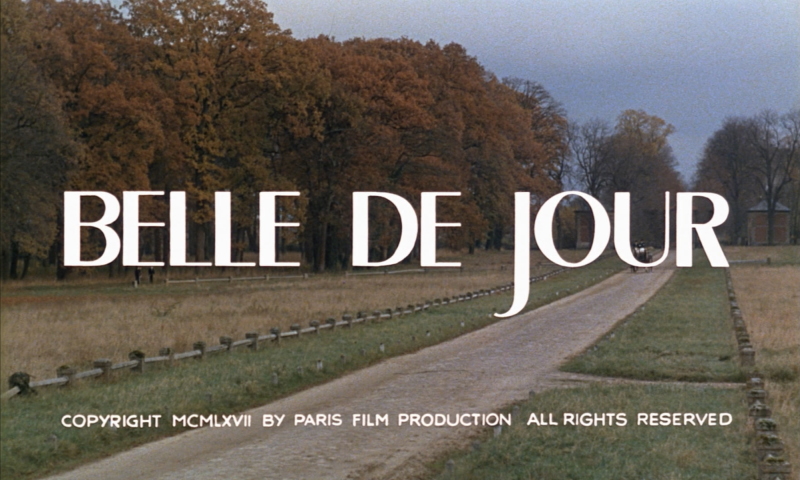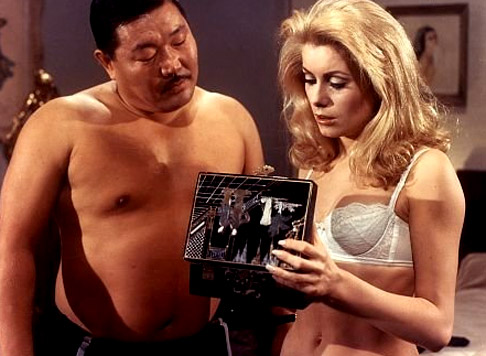
Watching, thinking and studying from all perspectives.
Separation
Jane Arden
Jack Bond, 1968
Cinematography| Aubrey Dewar & David Muir
The collaborative work between artists and lovers, Jack Bond and Jane Arden, had become the thing of legend. While all three of their feature length films had been acclaimed and considered to represent two of the most important voices in British Cinema, this was largely thanks to the film reviews that lingered on long after they had screened. Jack Bond was coasting on the British New Wave film scene of the 1960’s seemingly destined for great success when he met Jane Arden. She proved to be the perfect match for the talented filmmaker both personally and professionally. Jane Arden was an actor and frequent BBC talking head when she met Jack Bond. Eccentric, intellectual, beautiful, talented, innovative and always controversial — Jane Arden flourished to great heights after she met Bond. Neither of these artists were content to go with the flow of their time. Arden proved to be an outspoken Feminist, provocateur and filmmaker. Jack Bond’s views often matched hers and while every bit as experimental as Arden, he seems to have possessed a key eye for editing that lent itself to giving shape to Arden’s visionary work.

Pain, Rage and Sanity are pushed to extreme limits.
The Other Side of the Underneath
Jane Arden, 1972
Cinematography | Jack Bond & Aubrey Dewar
Jane Arden committed suicide in 1982. Devastated by her death, Jack Bond quickly set out to secure and store all copies of their 3 feature length films and impressive short feature within the vaults of the British Film Institute. He did so with the legal restriction that none could be screened or released. It is easy to imagine most film artists rushing to promote and celebrate their work, but for Jack Bond these films were far too intimate, personal and revelatory. It was not until some 20+ years had passed that one of Jane Arden’s children contacted Jack Bond. It was her youngest son who convinced him to reconsider his infamous decision to lock away the films. It would not be until 2009 that these three films would be screened and another one to two years before BFI could distribute the newly restored prints to DVD/Blu-ray. Even still, this work remains largely lost to American audiences — and a good many Europeans as well. It was only in the last several months that I began to slip into the worlds that Arden-Bond co-created.

A totally unique cinematic language form this disorienting and disturbing psychological thriller…
Anti-Clock
Jane Arden & Jack Bond, 1979
Cinematography | Jack Bond (Uncredited)
These films are all available via the British Film Institute on region-free Blu-ray. They can be found on Amazon or BFI‘s own website. If you truly love innovative, challenging and remarkable Film Art — viewing these three films is essential. Each film stands alone, but all three share a common thread of searching for equality, understanding and full formation of identity. The purpose of this blog post is to promote this work so that it can reach the audience who has not yet discovered it.

Transcendental Meditation and Video Experimentation lend toward an attempt to understand self and environment.
VIBRATION
Jane Arden & Jack Bond, 1975
I will do my best to not provide spoilers. I will also do my best to restrain my enthusiasm so that this is shorter. I will rely upon more than a couple of images from the work. It is key to note that imagery is of utmost importance to the work of Arden-Bond. But it is also crucial to note that their work was not style over content. The content of these films is rich and urges repeated viewings. These films were made by rebellious thinkers and none fit neatly into categorization.
Separation

London’s Swinging ’60’s is explored with equal amounts of intellectualism, style and unique innovation.
Separation
Jack Bond, 1968
Cinematography | Aubrey Dewar & David Muir
While Jack Bond is credited as this film’s director, it is clear that Jane Arden was closely involved with almost every aspect of the film. Considered to be one of England’s first truly avant-garde films, Separation is actually a great deal more. Once the viewer adjusts to the film’s often dated but striking innovative method of storytelling, this experimental movie is a highly effective study of a woman falling apart — or away from life. A middle-aged woman’s emotional and mental crisis results not so much from a failed marriage or poor choices — but from the societal and cultural judgements made against women as they age. Ideas of “reality” and “fantasy” are constantly blurred. Most certainly surreal but never dislodged from logic or realism.

The future, the present and the past all whisper our leading lady further into conflict…
Iain Quarrier, Jane Arden and David de Keyser
Separation
Jack Bond, 1968
Cinematography| Aubrey Dewar & David Muir
This is as close as Arden-Bond got to “light cinema.” It could be argued that the majority of this film takes place in the female protagonist’s inner self. As viewers we can only ever be certain of her past. Her present and future slip between what feels like cerebral fantasy to an alienated realism. Has she left her husband or has she left what appears to her idea of an out-dated Patriarchal Institution? Has she abandoned her child or has she lost the child? Is this good-looking, young and eagerly hip dude her new lover or imagined? And what of this other women who populate the film’s non-linear storyline?

Forever late or too early…
Jane Arden
Separation
Jack Bond, 1968
Cinematography| Aubrey Dewar & David Muir
For a film shot on the streets of the ever-styling streets of late 1960’s London, Separation does not look like most of the British films that came out of this period. The editing is never self-conscious or overtly eager to confuse the eye. Procul Harum provide a good deal of the film’s music and Mark Boyle’s celebrated Pop Art lava lamp-like projections jolt the film with sporadic uses of vivid color. Unlike most movies of this era and place, these are not used to trip us out — but almost more to stumble us further into the protagonist’s crisis. Much of the film is filmed in lush black and white.

Groving by force or choice?
Jane Arden
Separation
Jack Bond, 1968
Cinematography| Aubrey Dewar & David Muir
At turns naturalistic and stiffly artificial, Separation brims over with ideas and theories. Jane Arden’s Feminist Theory has started to take form but is still growing. This is largely a film of questions, doubts and fear. Our character is falling apart, but it is unclear if this is headed toward Nihilism or hope. There is a strong possibility that Jane Arden’s character is not so much falling apart but might have already broken into pieces. She might actually be in the process of reformation from the ruins of oppression and conformity. This magical film is sharply focused toward the struggle of Feminist Equality. It is sometimes sad, but often quite funny. Separation offers more insight than can be caught in one viewing. The film’s power grows with repeated viewings. It is a cinematic work of surprises and insights.

Looking deeper into the self than the viewer might anticipate.
Jane Arden
Separation
Jack Bond, 1968
Cinematography| Aubrey Dewar & David Muir
In many ways, Separation can be viewed as Jane Arden’s first step into understanding the self from both the intimate and cultural perspectives. She has latched on to the ideas and the importance of Feminism, but is still aching to understand how to grab it without breaking into a million tiny pieces. Jane Arden wrote the film and stars. Jack Bond’s hand as a filmmaker pulls all of it together into a cohesive cinematic work. Truly brilliant and way ahead of its time.

The battle of the sexes takes a darkly comical turn…
Separation
Jack Bond, 1968
Cinematography | Aubrey Dewar & David Muir
An artistic and Nihilistic study in Feminist Theory takes a truly cinematic dive into a woman’s subconscious. This film is fascinating, intellectual and surprisingly current. Tragically it was given a rather limited release after it was made. It says a great deal that the reputation of this film survived as the movie itself sat on shelves in the dark corner of The British Film Institute‘s vault. If you like films that make you think and take you to unexpected places, this is not a film to be missed.

A man’s death offers a woman a way out. She put a pretty ribbon on “it”
Separation
Jack Bond, 1968
Cinematography | Aubrey Dewar & David Muir
Whether Jane Arden’s fictionalized Self is falling together or apart is debatable, but one thing is most certainly clear: she is separating herself from the constraints of her society and culture. She is looking outward for equality and refusal of oppression. She is looking inward for understanding her self and why her identity is so fragmented and torn. Another important element which has already taken form in Arden and Bonds’ philosophy is the teachings and theories of Jacques Lucan. Most correctly called Lucan Theory is most often referred to as The Anti-Therapy Ideology. This rejection of typical Freudian and psychoanalytical thought is certainly hinted at within the frames of Separation. Ideas of symbology, the real, the imaginary and the power of the mirror are present thought the film, but Arden-Bond would soon be pulling their audience full-on into these concepts with their next film.

Symbology, projection, imaginary and real mix to form not only a film, but an entire philosophical approach to the art of filmmaking.
Iain Quarrier, Jane Arden and home movies…
Separation
Jack Bond, 1968
Cinematography| Aubrey Dewar & David Muir
As I’ve already mentioned, Separation was a critical hit at the time of release. Arden-Bond made a film that captured the Counter-Culture and Swinging London of the day but made something far more than a time capsule piece or celebratory work. It could have pushed both forward into the world of cinema, yet neither chose to go in that direction. Instead both continued their mutual and individual personal journeys. It would be over four years before they re-entered the filmmaking world. Arden focused on theatre. Her focus was the thing of legend. Never afraid or shy of controversy or public self-examination that she felt was important for other women as well as men, she wrote, directed and acted in several notorious experimental theatrical productions.
The most important of these were Vagina Rex and the Gas Oven and, most importantly, Holocaust: A New Communion for Freaks, Prophets and Witches. While these plays were carefully scripted, Arden loved collaboration. She encouraged her actors to follow their instincts. Improvisation and audience participation happened. These experimental pieces were controversial and pushed well past the British Theatre boundaries. Yet they were successful. Constantly on the verge of being banned and/or jeered, these performances are as discussed as the work of Joan Littlewood. Yet whereas Littlewood was concerned with finding ways for lost teens of East London to channel their anger, boredom and frustration into art, Arden was deeply and profoundly concerned with pushing forward Feminist Theory.

What is identity?
The Other Side of the Underneath
Jane Arden, 1972
Cinematography | Jack Bond & Aubrey Dewar
Tied up within Lacan Theory as well as her own personal demons she felt and saw reflected back to her from the Self-Mirror, this Feminist work was more focused on shaking off the pain, rage and cruelty of centuries patriarchal oppression. Sexuality was discussed full-on and often turned from sex objectivity to sexual confrontation. Pain and Rage were explored from both the practical and a growing ideology of Arden’s in which she connected the oppression of women directly to colonialism. These two plays would lay the groundwork for a number of important artists and careers. Of the artists, Sheila Allen was become the most prominent. Natasha Morgan would go on to play a crucial role in the British Women’s Liberation Movement and is now a respected and sought-after psychotherapist. Both of these women gave oral histories for BFI at the time that Arden-Bonds’ next film was restored and re-issued. And what a film it is…
The Other Side of the Underneath
Born out of both of her successful experimental theatre pieces, this film was intended to a combination of both plays. Jane Arden wrote the screenplay and insisted that Jack Bond give her full reign as the film’s director. He would go on to participate as cinematographer and “actor.” He would hire David Mingay as the film’s editor. Both Arden and Bond worked closely with Mingay as the film was pulled together. Bond would also take on the responsibility of getting the funding and all the required “items” for filming. These “items” included a brown bear, participation of local Wales coal miners, community members, a band of roaming gypsies, participation of actual mental hospital patients, several mentally/physically challenged individual from government institutions and most famously — Bond would secure a steady supply of LSD. The production of this film is notorious.

Centuries of Cruelty projected on to the face of a bride…
The Other Side of the Underneath
Jane Arden, 1972
Cinematography | Jack Bond & Aubrey Dewar
Most shocking is the fact that there doesn’t seem to be any distortion or untruth in its infamy. The bear would break free and threaten the safety of the tripping cast, the locals would break into fist fights, the mental patient and the mentally retarded would run away. And the actors would trip out. Led by a drunken but self-assured Jane Arden, these trips often took dark turns. She seems to have been able to lead them all through it. The ethics of this film production are most certainly questionable. But this was also what Arden-Bond and friends were after: A deadly pursuit of understanding the pain and rage of the oppressed and repressed.

“Mine! Mine! Mine!”
“She has a pretty face!!!”
Sheila Allen taunts with her human puppet…
The Other Side of the Underneath
Jane Arden, 1972
Cinematography | Jack Bond & Aubrey Dewar
Armed with an endless supply of wine and cigarettes, Jane Arden secured a number of volunteers to appear with her in front of the cameras. Both Sheila Allen and Natasha Morgan were present. The idea was that the entire cast and their director would live “on set” in a decaying old farm house for the duration of the filming. They also agreed to wear their costumes, Victorian Era type nighties, for the duration. Oh, and they also agreed to drop Acid repeatedly throughout all filming. Sheila Allen refused to live on set or to trip out on LSD. Accommodations were made for her to stay at an inn a few miles away. Natasha Morgan was initially hesitant to participate. She agreed to come along as the casts’ cook. However, she changed her mind and joined in. These two actors would figure prominently in the film. Penny Slinger was another actor and activist of import who participated. The lead role was given to an unknown woman who was new to the whole scene, Susanka Fraey. She would end up playing the leading character of the piece.

Susanna Fraey is the Protagonist…
The Other Side of the Underneath
Jane Arden, 1972
Cinematography | Jack Bond & Aubrey Dewar
Sally Minford, a Cellist, and her daughter would also participate. Obviously the child did not receive drugs. And as far as I can tell, Ms. Minford declined to take part in the LSD tripping. However, her role was limited to that of Cellist. She would compose and perform the film’s musical score throughout. Clearly skilled, the musical goal here is not beauty or melody but danger and threat.
I do not view it as a bad thing that I have had to watch Jane Arden’s The Other Side of the Underneath three times before I could form a solid opinion. Quite the contrary, I love the fact that this film’s complexities run so deep that it requires a great deal of thought. There is nothing “easy” about this bold work of film art. This profoundly disturbing film goes places to which I’ve never seen filmed before. Reckless, Dangerous and Bad To Know, this movie rattles more than just cages. This film amps its way from frenzy to hysteria and on to a sort of free-form descent into hippie dystopian vagrancy. The film pulls no punches as it is far too busy bluntly plummeting the subject matter and the cast into a submission of unfettered pain and self-examination. This is a particularly collaborative work and everything in the film depends upon the female cast members who agreed to participate.
Decidedly not plot-driven, this film does present us with a protagonist. A young woman “played” by Susanka Fraey is “fished” from a lake where she has attempted suicide. She quickly finds herself in a sort of mental asylum where all the women are dressed in Victorian style nightgowns and roam about freely. Both patients and gate keepers, it almost appears as if this insane asylum is self-contained. Only one person seems to be “in charge” within this madhouse and that is a firm psychiatrist played by Jane Arden herself.
While the film is largely concerned with the Anti-Psychiatry Movement evolved from Jacques Lacan, it is actually far more concerned with the seemingly unbearable rage repressed within the women that takes on an epic level. The strong feeling is that this rage and pain has been individually and universal-shared history of oppression and patriarchal cruelty. Our unnamed protagonist is forever roaming the corridors, hidden spaces and grounds of a madhouse that is truly “mad” and in mortal danger from the pain it all seems to inflict. She along with her fellow inmates are searching through the wreckage of self and shared identity / identities. There is a constant and unrelenting energy conveyed which is full of menace and danger. Nothing feels “acted” and everything we see takes on an importance that is hard to grasp and often even more challenging to watch.

LSD Manipulated to project the deepest pain…
The Other Side of the Underneath
Jane Arden, 1972
Cinematography | Jack Bond & Aubrey Dewar
Sheila Allen serves is a sort of evil Court Jester who uses patients as a puppets and torments everyone with mind-numbing insanity. She also morphs into a Burlesque Stripper From Hell who uses her sexuality and body as a threat instead of an object. Her voice and performance haunt the entire film. This was a long way from The BBC or Harry Potter. Susanna Fraey is almost ever present and carries a great deal of presence on the screen. Possessed with a haunting face and effortless beauty, she is at once victim and victimizer. Penny Slinger gives a particularly potent and oddly focused performance. It is opposite Slinger that we see our protagonist’s as a source of danger.

A Mirror Identity Game to the Death…
Penny Slinger & Susanka Fraey
The Other Side of the Underneath
Jane Arden, 1972
Cinematography | Jack Bond & Aubrey Dewar
Utilizing the Lucan Mirror Theory, the two young women sit opposite each other with large splinters of mirror all around them. What begins as a sort of Identity Game to the death, it is clear that Slinger is intending to murder Fraey, but with a sneak of a tender kiss she is able to throw Slinger off course. Intended killing swept away by tenderness, Fraey had trapped her in her own glass web. Just as the kiss ends, her knife slips into Slinger.
The film is built around a long sequence that is a sort of support group / open therapy. Tripping out on acid and under the guidance of the project built from the stage productions — these women have been led to a place while in mind-expansion mode. The melt-downs are intense, horrific and almost unbearable. It is here that Natasha Morgan’s participation would become most valuable. Her emotional break is at once horrific, painful and almost unbearable. At the same time, it is here that the film presents itself at its most human. Mixing with all of the production challenges, these pseudo group therapy sessions add to the movie’s intention of pure hysteria.

A victim of her own game…
Penny Slinger
The Other Side of the Underneath
Jane Arden, 1972
Cinematography | Jack Bond & Aubrey Dewar
As these women demonstrate their emotional pain and personal rages/horrors — our protagonist is led into a danger game of mirrors, sexuality, psychic death and crucifixion. Sexuality is explored in various ways. At times the female body is shown as an object for men to rape or harm. Other times it is shown as pleasure born from pain and fear. And then it is also shown as something beautiful, pleasing and erotic. According to the record of production, Arden decided late in the filming to have her lover/collaborator make love to actress, Penny Slinger. Pushing them to extremities, this scene is tender, soft and erotic. Jack Bond’s “character” clearly understands female anatomy and brings pleasure — not threat, rape or pain.

Unscripted, Arden has her lover make love to one of the inmates.
Jack Bond & Penny Slinger
The Other Side of the Underneath
Jane Arden, 1972
Cinematography | Jack Bond & Aubrey Dewar
As the film amps its way to conclusion, the protagonist’s journey feels more ours than hers. We follow her through a house and landscape of pain, horror and sometimes promise to abject confusion. In the end the question of identity and self-acceptance is tossed onto a dirty cold slab of a floor. Is there to be redemption or healing? More likely it is a struggle that has only just been recognized and has a very long way to go.

As erotic desire is expressed the audience holds its breath only to discover that the male lover understands the woman’s body.
Jack Bond & Penny Slinger
The Other Side of the Underneath
Jane Arden, 1972
Cinematography | Jack Bond & Aubrey Dewar
Intentionally unpleasant and contradictory, Jane Arden created a film that demands your attention. This is less a movie and more of a cinematic experience. Not for the faint of heart, this is a grim and repulsive study of female identity that refuses to let you go. Strange, darkly comical, surreal, horrifying, raw and truly unforgettable — Jane Arden’s film floats somewhere between Jean-luc Goddard and Ken Russell, but with an entirely different goal in mind. The horrors she and Jack Bond captured are all the more devastating because we realize that beneath the surface — what we see is real.

Going mad…
Sheila Allen
The Other Side of the Underneath
Jane Arden, 1972
Cinematography | Jack Bond & Aubrey Dewar
The next couple of years found Jane Arden and Jack Bond exploring further into the self with use of Transcendental Meditation, Chanting and the aid of Gurus and other mystics. One gets the sense that Jack Bond followed his love on her quest to grapple with her own depression. The result of these mystical exorcises would be put to use in their short film, VIBRATION. To 21st Century eyes, the videography feels grounded and dated. However when one realizes this film was made in 1975, the artistry must be admired.
Jane Arden had developed her own theory regarding the self and coping against repression and anxiety. I will not go into detail, but she called this idea RAT. Essentially the idea was to reject all rational thought. Arden’s life’s journey begin to slip away from Feminism and toward The New Age ideology of Humanism. The problem was that both she and Bond could see how this ideology was not only threatened by a larger control — plans seemed to already be falling into place to control not only individual actions, but our thoughts as well. What might have seemed paranoia rising above the slams of inflation and PUNK, turned out to be somewhat prophetic.

“This is my Anxiety Survival Broadcast ensuring a past future programing. My brain is recreating a negative repeat pattern.”
Sebastian Saville
Anti-Clock
Jane Arden & Jack Bond, 1979
Cinematography | Jack Bond (Uncredited)
Keep in mind that the final film made by Arden-Bond was before anyone in England knew about CCTV which would soon be filming almost every human movement in the country.
Anti-Clock
Unlike Separation and The Other Side of the Underneath, Anti-Clock less concerned with Feminist Theory than that of retaining humanity in the face of cultural and societal oppression as the standpoint for understanding identity. The exploration of Self had culminated toward a Humanist ideology. The central character of this highly experimental “thriller” is a suicidal man played by Arden’s son, Sebastian Saville.

“Life force cannot be controlled by your little brain machine.”
Anti-Clock
Jane Arden & Jack Bond, 1979
Cinematography | Jack Bond (Uncredited)
Filmed in London during Great Britain’s dark economic dystopia and the rise of Punk Rock, this film is interestingly disengaged from that history. Even more interesting, is the contradiction that it would be hard to imagine a more “Punk” film. Decidedly more punk than anything Alex Cox or Derek Jarman made at the time, Arden and Bond had not let go of their anger and rebellion against societal and cultural repression, but this film crafted a whole new sort of cinematic language. A linguistically intelligent use of carefully filmed and found video/film material forms something altogether new and unique.
As our suicidal protagonist works toward trying to survive, he is “assisted” by an archetypal psychiatrist (also played by Saville) and a group of scientists, mathematicians and others who rely upon constant video surveillance to monitor his every movement. Most fantastically, they are using these transmissions as connection into his cerebral logic. It is fairly clear that these persons are connected to the government. Less assisting and more studying in an attempt to control their subject, Joseph Sapha. Joseph quickly becomes suspect of these who claim to want to help him. It is particularly chilling that this film was made just a few years prior to the creation of CCTV.

“open your eyes.”
“they are open.”
“then why can’t you see?”
Sebastian Saville
Anti-Clock
Jane Arden & Jack Bond, 1979
Cinematography | Jack Bond (Uncredited)
The style/styles of the film may not seem as cutting edge as they must have some 30+ years ago, but this film retains a subversive, disturbing and unsettling impact. It is also still very sharp. It is a film experience to be handled with a careful eye and ear. One missed action of sound and the viewer can become lost in Joseph Sapha’s delima. Watching Anti-Clock is not an easy film. But unlike I anticipated, it is NOT a pretentious work of art. It is a clever manipulation of the medium to convey a story that is not only horrifying but alarming relevant to the 21st Century.

“Thoughts hang around for a very long time. To be precise: forever.”
Sebastian Saville
Anti-Clock
Jane Arden & Jack Bond, 1979
Cinematography | Jack Bond (Uncredited)
A sort of Proto-Punk exploration into humanity and a government that dares to study, manipulate and control those who dwell within its borders. Joseph is a young sort of “Every Man” who, like many of us, has had a troubling childhood and life. As this experimental and innovative film pulls us into the video and sound-looped world, the experience is an intellectual, surreal and disorienting jolt to the senses. Slowly the viewer becomes a part of the film’s strange logic. As Joseph grapples with his sexuality, guilt, loneliness and vexing non-purpose in life — the past, present and future are filmed and played discordantly against the idea of order. In a profoundly confused and desperate state of identity crisis, the “help” being offered is not aiming to provide what he anticipates.
But “they” and “he” are all led to a truth that is chilling and unforgettable.

“The patterns inside me were beginning to disconnect. By patterns, I mean those cycles or spirals of thought or behavior which i have been taught to call ‘myself.’ This ‘I’ is simply space. And where the strands of energy costs is a dot. And this dot is the delusion called ‘my identity.'”
Sebastian Saville aims the gun.
Anti-Clock
Jane Arden & Jack Bond, 1979
Cinematography | Jack Bond (Uncredited)
NOTE: The BFI disc contains a newly re-edited version of this film by Jack Bond. Bond re-crafted the film in 2005 in an attempt to make the film more clear to modern viewers. Skip this version. Bond does not improve the film or create a more coherent film experience. If anything he saps a great deal of he and Ardens’ exceptional creativity. To be honest, his 2005 re-edit reminds us how crucial Jane Arden was the vision.
This movie may not be everyone’s idea of a thriller, but it is a powerful work of art. Anti-Clock also serves as a fitting end to the Arden-Bond collaboration. These three films form a logic circle of journey to Self. It is a provocative, controversial, difficult, dark and brilliant cinematic journey. It took Jack Bond close to two years to edit the film together. Filmed with various forms of media — largely 1970’s video cameras of different sorts. Very often he applied chemical “treatments” to video footage to gain new and very unique images. These are interlaced with old assembled footage of dictators, monarchs, war, propaganda and a constantly unrelenting manner of sound editing.

“There is a continuum which links all living things together so that the smallest cell does not pulsate without its effect being felt in the furtherest reaches of the solar system. So, everything being one is not some romantic ideal, but an indisputable scientific reality. When this information seeps into our consciousness, it must change the moral structure of society and destroy the value system of the rational world.”
Anti-Clock
Jane Arden & Jack Bond, 1979
Cinematography | Jack Bond (Uncredited)
The look of this film remains oddly potent and totally unique in the way it has been assembled. This odd and disturbing film was championed in 1979 as a brilliant psychological thriller. However, it only played in a few cities in the US and a very brief run in London. It also served as a connector to French Film Master, Claude Chabrol, with whom Arden was to work. By the time the film opened Jack Bond and Jane Arden had ended their relationship. It might have seemed that Jack Bond was lost while Jane Arden was on her way to a new artistic vision in France. This was not the case.
Jane Arden would take her own life in December of 1982 at the age of 55. Jack Bond would go on to work as a documentarian for the BBC. He remains an artist of note in Great Britain.
The film work they co-created remains vital, powerful and very much alive.
Matty Stanfield, 12.30.2015







